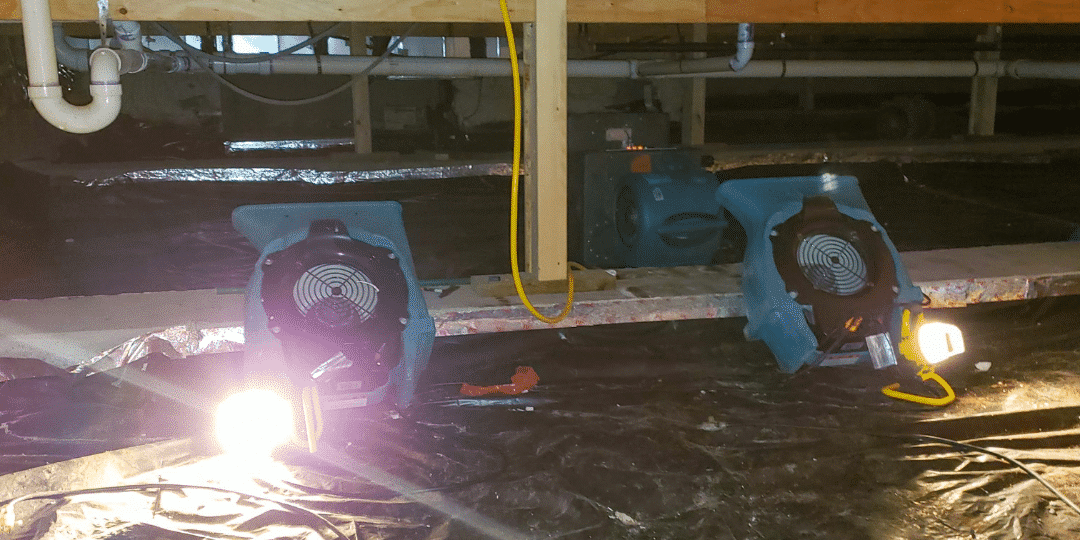If you’ve noticed musty odors, damp spots on your walls, or visible mold in your basement or crawl space, your home may be suffering from hidden moisture and humidity issues. These conditions don’t just threaten your indoor air quality—they can also lead to wood rot, pest infestations, and serious foundation damage. One of the most effective ways to protect your home is through crawl space and basement encapsulation.
By creating a sealed crawl space or basement environment with high-performance vapor barriers, spray foam, and proper ventilation, encapsulation protects your home from infiltration, condensation, and long-term water damage—while also enhancing your home’s energy efficiency and value.
What Is Crawl Space and Basement Encapsulation?
Encapsulation involves sealing the crawl space foundation, basement walls, and floors with protective materials to block moisture, soil gases, and pest intrusion. The process typically includes:
- Installing a thick polyethylene vapor barrier across floors and up walls
- Sealing all seams, joints, and plumbing penetrations with durable sealant
- Adding dehumidifiers or ventilation systems to control humidity
- Using spray foam insulation to seal joist cavities and rim duct areas
- Redirecting groundwater with sump pumps or a French drain
- Optional pest control and termite treatments
Encapsulation is often paired with basement waterproofing measures to ensure water is not just blocked—but redirected away from the home entirely.
Key Benefits of Encapsulation
Moisture and Mold Control
The #1 reason to encapsulate is moisture protection. Basements and crawl spaces are highly vulnerable to rising groundwater, leaking pipes, and even flood conditions. If unchecked, condensation builds up on cold surfaces, fueling mildew, fungus, and spore growth. Encapsulation prevents this by fully separating the interior from damp soil and outside climate influences.
Pest and Rodent Prevention
A damp, unsealed crawl space is an open invitation to insects, rodents, and even termites. Encapsulation blocks entry points and creates a dry, unwelcoming environment for unwanted guests, helping reduce the need for recurring pest control treatments.
Improved Indoor Air Quality
As air rises through your home (a process called the “stack effect”), any pollutants, odor, or radon gas in your crawl space or basement can be drawn into your living space. By encapsulating and conditioning these areas, you protect your home from dangerous air contaminants that affect your family’s health.
Energy Efficiency and Comfort
Moist air is harder to heat and cool. Encapsulation reduces air infiltration, eases strain on your furnace or air conditioner, and helps maintain a consistent temperature year-round—lowering your energy bills and improving comfort on every floor of your home.
Structural Protection
Moisture can weaken wood framing, rust fasteners, and crack masonry over time. Encapsulation preserves structural integrity by controlling dampness at the source. It also protects plastic, foam, fiberglass, and other building materials from degradation.
Enhanced Home Value
A professionally sealed and conditioned crawl space or basement is a valuable home improvement. It offers buyers peace of mind, especially when paired with a documented inspection, warranty, and maintenance record. Some insurance companies even offer policy discounts for encapsulated spaces.
Things to Consider Before Encapsulating
Encapsulation is an excellent investment, but it’s important to plan carefully:
- Cost: Depending on the size, layout, and condition of your space, encapsulation projects typically range from $5,000 to $15,000.
- Access: Encapsulation can limit access to certain pipes, electrical wiring, or combustion appliances. Always consult an electrician or HVAC technician when working around furnaces or combustion air systems.
- Building Code Compliance: Ensure that all work follows local building codes, especially when it comes to ventilation, vapor barrier thickness, and waterproofing standards.
- Maintenance: Dehumidifiers, sump pumps, and other components require regular monitoring and occasional service. Scheduling an annual inspection with your crawl space contractor is recommended.
FAQs About Encapsulation
Q: Will encapsulation stop flooding?
Encapsulation is not a substitute for proper drainage or sump pump systems. It should be part of a broader basement waterproofing plan.
Q: Can I encapsulate a damp or moldy space?
Only after remediation. Encapsulating over mold, insect infestations, or active water leaks can trap problems inside and make them worse.
Q: Does encapsulation help with radon?
Yes. A vapor barrier can reduce radon infiltration, especially when combined with a dedicated radon mitigation system.
Q: What if I need access to plumbing or HVAC later?
Barriers can be cut and resealed. A professional will install the system in a way that preserves access to critical components.
Work With a Trusted Crawl Space and Basement Encapsulation Expert
At Insulation Pros of Colorado, we provide turnkey crawl space encapsulation, basement wall insulation, and vapor barrier installation services. Our team of certified professionals uses code-compliant materials and precision techniques to protect your home against moisture, pests, and air quality threats—backed by a 10-year warranty.
We handle everything from vapor barrier selection and spray foam application to sump pump installation, foam sealing, and maintenance inspections. Whether your goal is long-term health, energy savings, or home protection, our solutions are designed for Colorado’s unique climate and conditions.
Contact Insulation Pros today at (970) 680-4875 or complete our online form to schedule your free on-site estimate. Let us help you take control of your home’s air, moisture, and foundation health—starting from the ground up.








